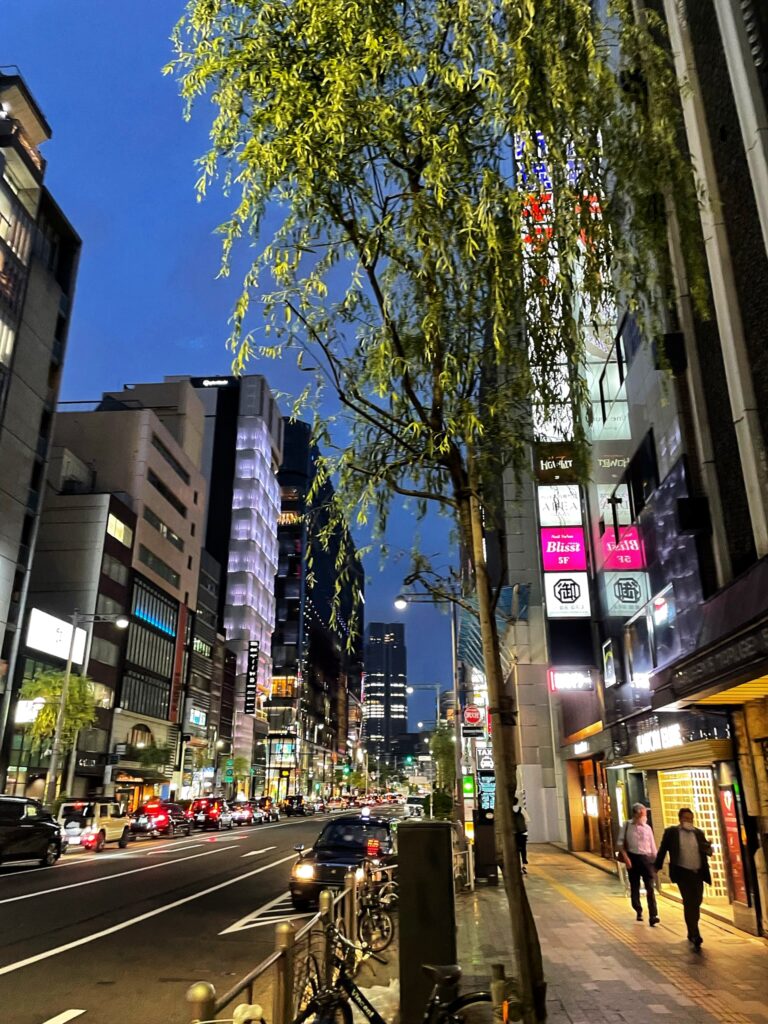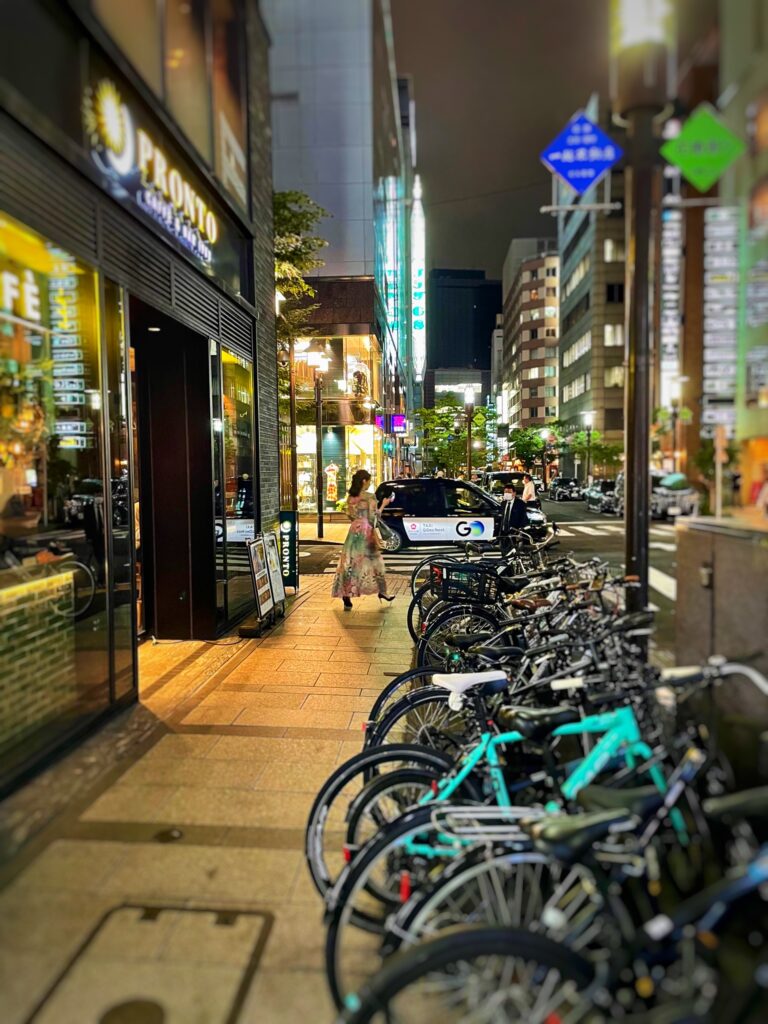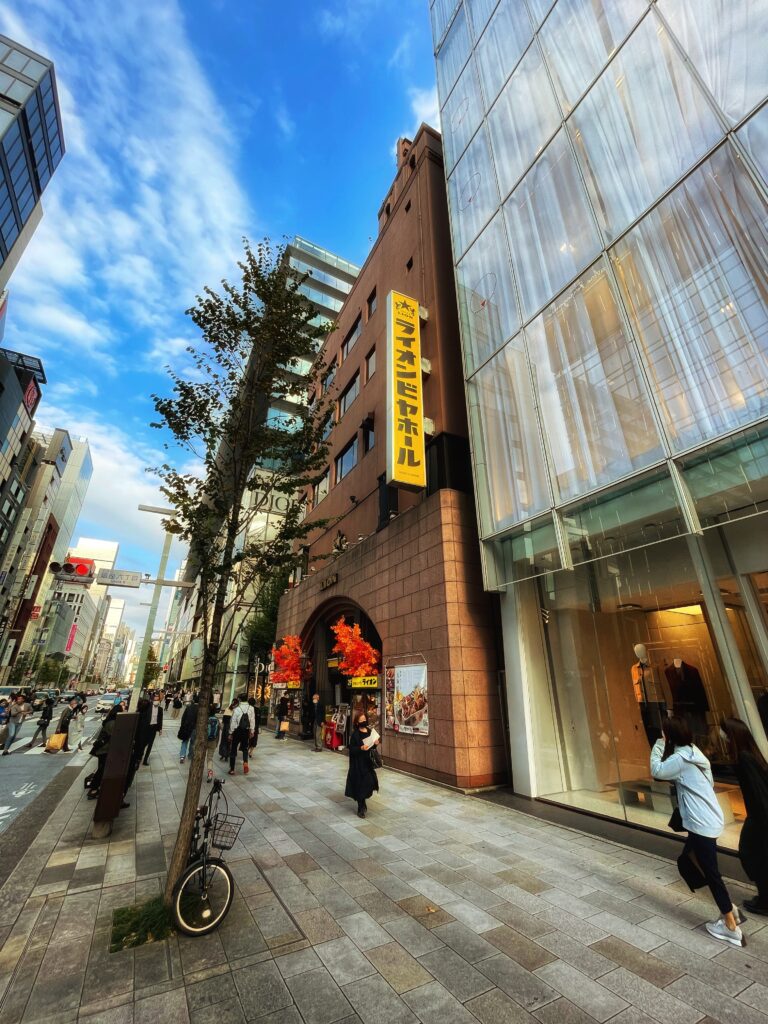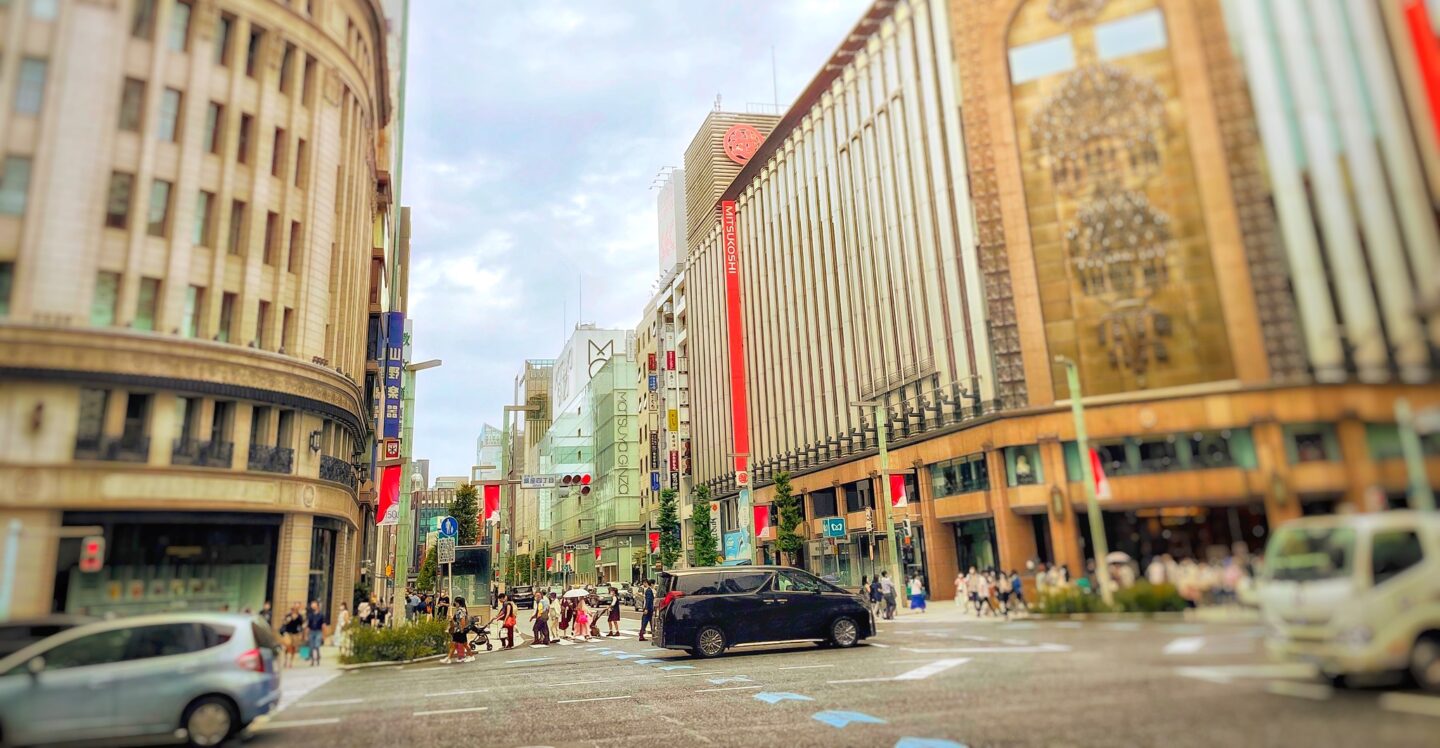Recently, I’ve been dropping in at a cafe in Tokyo’s upmarket Ginza district on my lunch breaks. It’s an elegant place with walls lined with mirrors and some old pictures of life on a coffee plantation, making it a pleasant little swerve out of the everyday. It is never very full, but most of the customers have the air of regulars. Perhaps some are as drawn as I am by the way the coffee is served — on a polished pewter tray in a thick china cup that is pleasingly heavy in the hand. And the coffee, exclusively Brazilian, is really very good. None of this, however, is what first attracted me to it.

Where I am is the Cafe Paulista, which is a reincarnation of one of the very first cafes to open in Ginza, and indeed in all of Japan. The current cafe dates from 1970 but the original, set up by a former emigrant to Brazil who has a good claim to be Japan’s coffee evangelist, threw its doors open in 1911 in another part of Ginza before closing some twenty years later. And this is the real reason why I’m here: to think about how Ginza became the place it is now.
Ginza’s high-end shops and art galleries and expensive cafes, bars, and restaurants have helped make it almost a brand in Japan, a symbol of sophistication, taste, and wealth. And this is never truer than at night, when Ginza becomes the playground of the rich and famous and when glamorous women in cocktail dresses and their kimono-clad “mama-san” bosses can be glimpsed making their way after sundown to its fabulously expensive hostess clubs. In fact, it’s easy to feel, particularly after dark, that Ginza has a special personality, even an air of mystery, of there being a hidden world, one with its own standards and rules.
But much of what Ginza is today, and particularly this nighttime Ginza, emerged — one could say with just a little poetic license — out of a cup of coffee. Or at least, one could certainly say that the way it came into being started with the arrival, in 1911, of three cafes in Ginza, the Paulista among them.

The Paulista, though, is not the only place where one can imaginatively travel back into modern Ginza’s origins in the early decades of the last century. And this, in fact, is another thing that sets Ginza apart from most Tokyo districts. Elsewhere, history usually lies behind what is visible rather than coming into view itself — a matter of old patterns in new forms.
In Ginza, though, the past is much more tangible. Even if the original buildings aren’t there, in more than a few places the occupants from a century or so ago are. One can, for instance, have a morning coffee, then eat lunch, then go shopping, and finally end the day with a cocktail in establishments that were all opened between the turn of the last century to the 1930s — the era, as we shall see, that created the Ginza of today.
Let’s say, then, that we are sipping our morning coffee in the Paulista (the original one) in 1922, just before the Great Earthquake in 1923 reduced it to rubble. We might then have grabbed an ice cream or a soda at the Shiseido Parlour, on the other side of the avenue from where the Paulista is now. It opened in 1902 as Japan’s first soda fountain and one of the very few places offering ice cream, before turning into a restaurant serving Western food in 1928. (Shiseido, by the way, which most people will know as Japan’s top cosmetics company, started life as a Ginza pharmacy in the 1870s.)
Perhaps, though, moving forward in time by a decade or so, we might have wanted something a little livelier, and something to drink, too. In that case, we might have gone another block up the avenue and chosen the Ginza Lion beer hall, which opened in 1934. The building has changed, but the ground floor looks just the way it always has, with a spectacular glass mosaic mural of women harvesting barley and grapes over the main bar, walls of red brick, and green-tiled pillars.

And then, still moving north, midway through the district, we get to the Wako department store, operated by the watchmaker Seiko. Ginza may be a symbol to the rest of Japan, but if it has its own symbol, then this neo-renaissance building, erected in 1932, is it. No doubt its classical elegance has something to do with it, or the fact that the average shopper wouldn’t dream of entering its doors considering how costly it mostly is, but so too must the clock tower that sits on top of it, and the hourly chimes — the Westminster chime, to be precise, or the sound of the bells of London’s Big Ben.
And then, as the sun goes down, we might head south again for a few minutes for a cocktail at the Bar Lupin, which opened in 1928 and was a gathering place for writers, artists and actors. (The bar today may live off the presence of its Jazz Age ghosts, but it’s the kind of place one can only really find in Ginza). And this is by no means an exhaustive list of the places we might have gone to in the early decades of the last century that still exist.
Ginza’s origins
Ginza’s history may be rich, but it’s shallow, too; for most of its existence, it was a most unremarkable place. In pre-modern Edo, it was a downtown area of “commoners” — about the only thing to say about it is that it took its name from a silver mint. But perhaps this was just what was needed for what came next, in the wake of an 1872 fire that burned the district to the ground. The devastated area became a blank canvas to experiment with new urban forms. Where better, after all, to set up such a canvas than somewhere with no real character or associations that anyone would care much to lose?
The fire was just one of many that, over the centuries, had plagued a city that had been made mostly of wood (and a bit of paper). Since Japan began modernizing after the Meiji Restoration in 1868, the city had put up a few important buildings in brick, the new construction material imported from the West. But what about an entire district? Bricks are inflammable. And what’s more, a district of brick would look, to use the Japanese parlance of the day, “civilized,” meaning, among other things, something that would signal to the then all-powerful and overbearing West with its global empires that the country deserved to be treated as an equal.
London’s Regent St. was taken as the model. Under the direction of an Irish architect called Thomas Waters, the first part of what came known as Brick Town was put up in Ginza within a year; the rest by 1877. It was an utterly unique district in the Tokyo of the time.
A little of Ginza’s modern character fell into place straight away. Since the buildings were expensive, the prefire residents of Ginza were priced out — an early example of gentrification. For the most part, well-off small business owners, many in trades serving a wealthy clientele, took their place. The district thus became from the start of its modern reincarnation what it remains today — a place of smart shops aimed at wealthy customers, a handful of which can even trace their lineage all the way back to this period.
The great 1923 earthquake flattened Brick Town. And by that time, no one thought it was a good idea to rebuild it. Foreigners were a bit snooty — it wasn’t as grand or imposing as the real Regent Street. For Tokyoites, meanwhile, the brick buildings might have looked terribly modern but they weren’t that great to live or work in. As a result, some of the buildings had been left vacant by the time the quake struck. But Brick Town’s influence was lasting — it had done its job in creating fertile ground for what came next.
Birth of Ginza’s cafes
Of the three cafes, the Paulista was the third to open. Its legacy did not lead directly to Ginza’s demimonde — as we shall see shortly, that honour primarily goes to the first of the cafes, the Printemps. Nevertheless, the Paulista’s founder, Ryu Mizuno, deserves a mention since not only is he, arguably, the father of coffee drinking in Japan, but because, while he really only had selling coffee in mind, he was as self-consciously committed to importing cafe culture as the founders of the two other cafes.
Mizuno had worked in coffee plantations in Brazil, a history the current cafe alludes to in its pictures of plantation life. But by 1911 he was back home, and armed with a free supply of beans from the Sao Paolo state government to popularize coffee in his home country. It may appear that he had walked into the easiest business opportunity possible — no country has failed to succumb to the allure of coffee — but Japan at the time really wasn’t sure yet whether it liked the new drink, and there were some popular songs going around ridiculing it.
But Mizuno seemed to view his endeavour as, to some extent at least, answering the call of patriotic duty: he thought acquiring the coffee-drinking habit was an inevitable part of Japan’s path to modernity and of catching up with the West (and overtaking it, of course).
Besides, another part of his job for Sao Paolo was to encourage more Japanese to emigrate, as he had once done, to work in coffee plantations, so he must have felt like he was doing everyone a favour by getting his compatriots to turn to the new drink. But how to overcome the skepticism? The country was wedded to green tea. And while there were teahouses aplenty, these were firmly anchored in traditional culture.
This, then, was how Mizuno hit on the idea that the founder of the Printemps had had just months earlier. It was time to import the Parisian cafe. Mizuno visited Paris, where he was inspired above all by the venerable Cafe Procope. But while for Mizuno, the formula was simple and neatly businesslike — for a novel drink, a novel environment was needed — a few blocks way, a painter by the name of Shozo Matsuyama had something very different in mind.
In 1911, Matsuyama knew that his long-held dream of going to study in Paris would never happen; with his adopted father now bankrupt, there just wasn’t the money. But if he couldn’t drop into a cafe after a day’s daubing in a garret studio to discuss art and culture in Paris itself, then perhaps he could do something similar in Tokyo.
There were, after all, always the lucky ones returning to Japan after months or years of studying in what was then the center of the Western art world. And it wasn’t just these painters he could talk to — there were novelists and others, too, who would have a few things to say about their experiences of traveling abroad and the new world and new perspectives that were emerging in Japan. All that was needed was somewhere for them to gather — and in the right atmosphere, too.
In February 1911, just 10 months before Mizuno the coffee apostle opened the Paulista, Matsuyama, inspired by this vision or something like it, opened the Cafe Printemps, Japan’s very first Parisian-style cafe, with another painter called Gonpachiro Hiraoka.

It quickly attracted an illustrious clientele. Initially required to become “members,” in order to lend a bit of stability to what at the time must have seemed like not just a bold but also a financially risky venture, they included the novelists Ogai Mori, Kafu Nagai, and Junichiro Tanizaki — three of Japan’s greatest novelists of the day and big names still. Besides the literati and the painters, there were also kabuki actors and cultural critics, and even geisha from the Shimbashi and Akasaka districts. And indeed, for almost the next century, the district would come to be seen as the preserve of the more intellectual and sophisticated type.
But much as the Printemps was meant to feel like Paris, with foreign foods and liquors served, there was one important difference that would be crucial to the subsequent evolution of the Ginza cafe and indeed of Ginza itself. The wait staff, instead of being all male, were all female.
In contrast, at the nearby Paulista, while Mizuno had also innovated when it came to the wait staff, it was not women he turned to but boys dressed as naval officers in white jackets with epaulets and black trousers. And it is for this very reason that we have to wave goodbye to the Paulista, even though it did achieve success, attracting its own cultural figures, including the brilliant short-story writer Ryunosuke Akutagawa, before closing after the 1923 earthquake. For it was the waitresses at the Cafe Printemps who carried around the future in their aprons rather than the boyish admiral lookalikes.
Initially, the Printemps’ male customers were left to happily pontificate among themselves, but not so many years would elapse before it was primarily the company of the waitresses that men came to the Printemps for — and to the many other cafes much like it that had started to spring up all over Ginza. And when they did, the world of the hostess was born; Japan’s ancient culture of courtesans was about to be reincarnated in a new form.
Continued…
